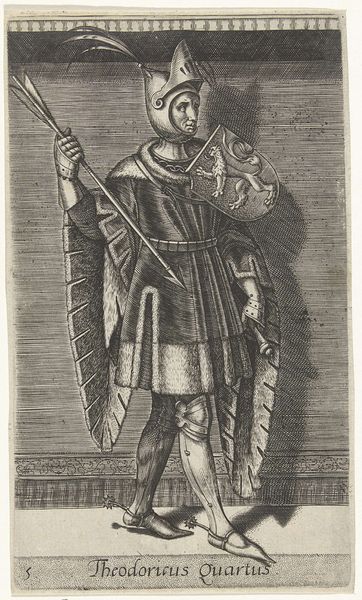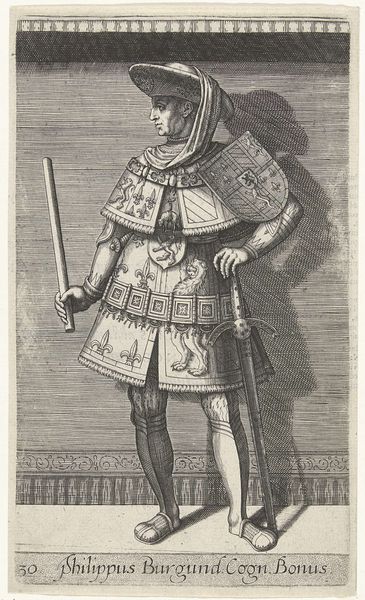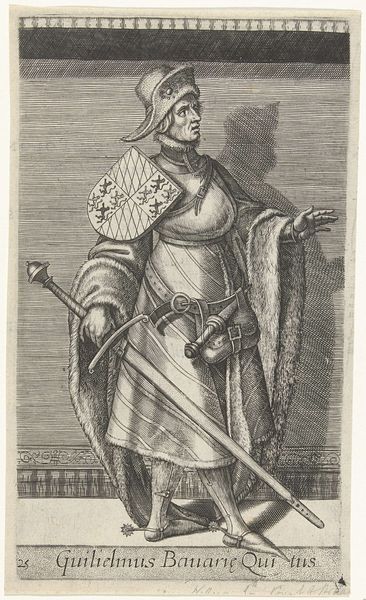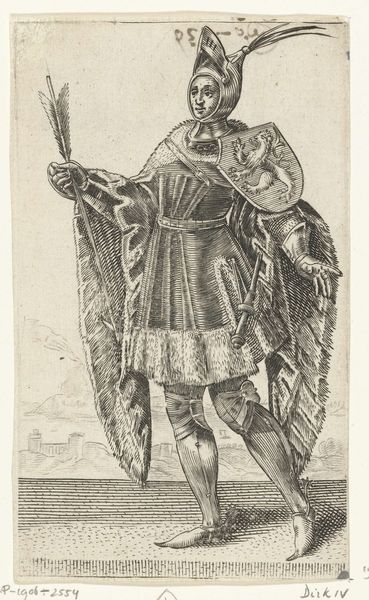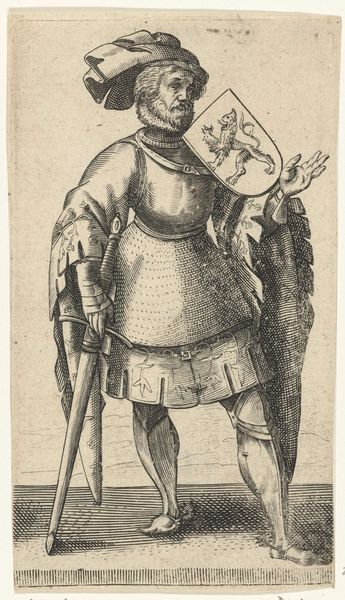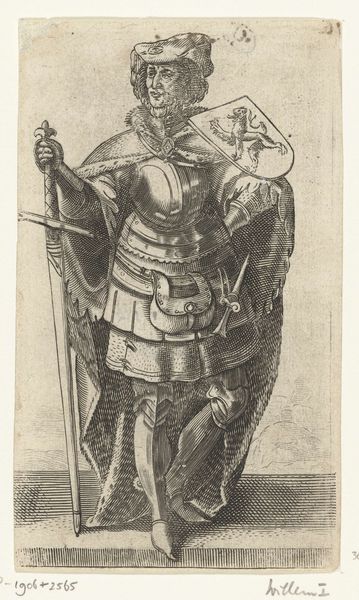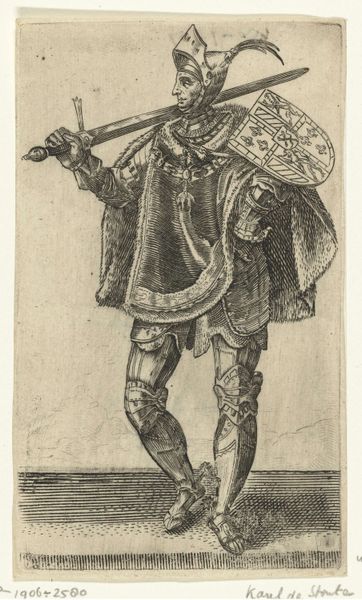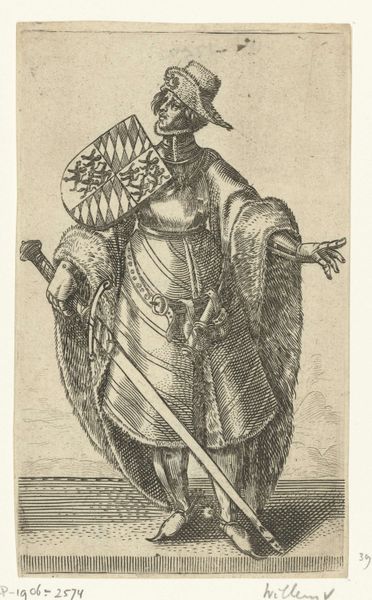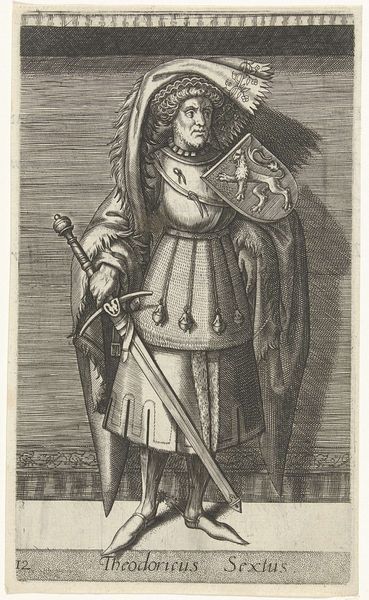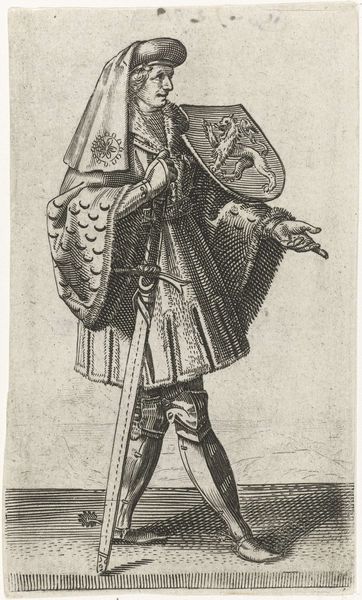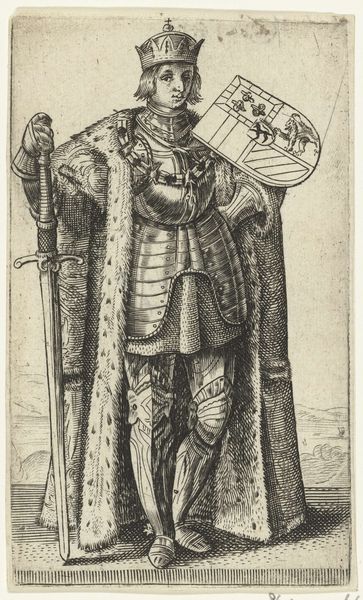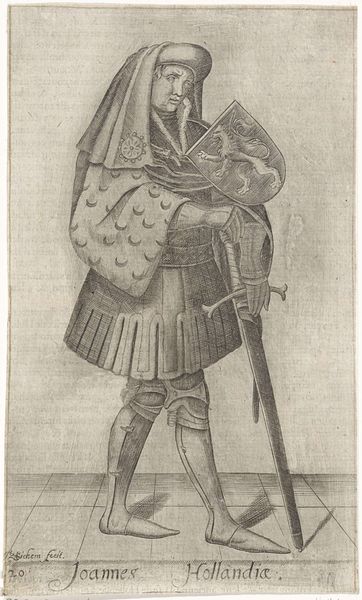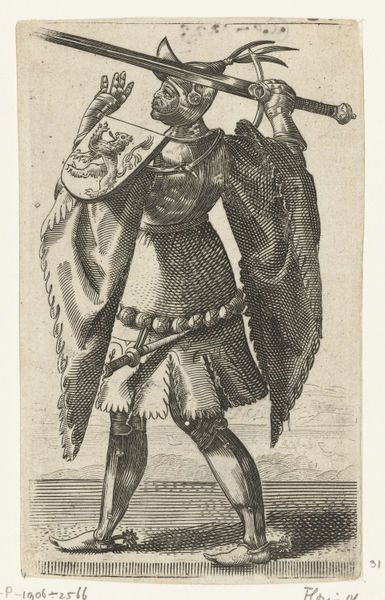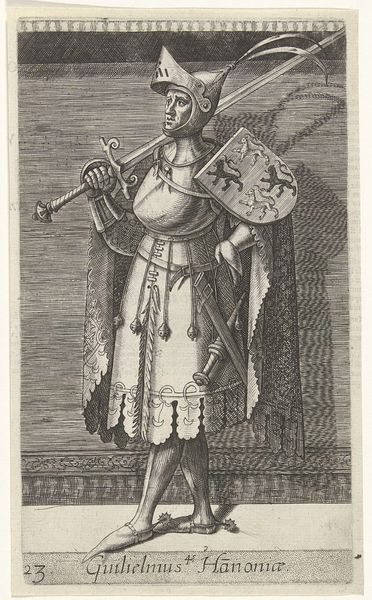
print, engraving
#
portrait
# print
#
history-painting
#
northern-renaissance
#
engraving
Dimensions: height 206 mm, width 122 mm
Copyright: Rijks Museum: Open Domain
Editor: Here we have Philips Galle's "Portrait of Jan I, Count of Holland," an engraving from 1578. The subject is quite imposing, armed with both a shield and sword, though the mood is rather solemn. What do you see in this piece? Curator: I see more than just a portrait of a count. I see a visual representation of power and legitimacy crafted during a turbulent period. Think about the context: 1578. This print wasn't merely documentation; it was propaganda. How does understanding the Eighty Years' War, and the Dutch struggle for independence, change how we view Jan's stern expression and symbols of authority? Editor: So, the artist may have been trying to present a strong image to rally support for Dutch independence? Curator: Precisely! Consider the shield bearing the lion rampant—a direct claim to power and lineage. But more than that, the act of producing and circulating this image through print transforms Jan into an almost mythical figure, a symbol of Dutch heritage against Spanish oppression. What does it mean to create an image that isn't just *of* power, but *for* power? Editor: It's like constructing an identity... carefully building a historical narrative. I hadn’t considered it that way. Curator: Exactly. And note the precise, almost clinical detail of the armour and weaponry. Is this about celebrating a historical figure, or solidifying a claim to cultural identity at a time of incredible upheaval? What purpose do these historical images serve in creating the national consciousness? Editor: It highlights the way images can be active participants in shaping political discourse, not just passive reflections of reality. Curator: Absolutely. This portrait of Jan I is more than just a face; it's a call to action embedded in ink and paper, linking past claims to current aspirations. Thanks to your observation, it is also clear that there’s much to learn about how a ruler may utilize art for establishing and defending authority.
Comments
No comments
Be the first to comment and join the conversation on the ultimate creative platform.
